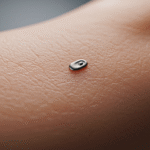Introduction
A landmark U.S. study tracking over 205,000 adults for 15 years has delivered a surprising verdict about one of America’s favorite foods: French fries are uniquely linked to a 37% higher risk of type 2 diabetes, while boiled, baked, or mashed potatoes show no significant association. Published in Diabetes Care (August 2025), the research reveals how cooking methods transform this humble vegetable from neutral to dangerous—and identifies smarter carb swaps that could protect metabolic health.
In this deep dive, we’ll explore:
- Why fries are different (the acrylamide-glycemic index double whammy)
- The safest ways to prepare potatoes (water is your ally)
- What to eat instead (whole grains outperform even “healthy” white rice)
- .
Peeling Back the Study: What Did Researchers Do?
Over nearly four decades—from 1984 to 2021—researchers tracked the diets of more than 205,000 U.S. health professionals, none of whom had diabetes, cardiovascular disease, or cancer at the start. Three well-established cohort studies were used: the Nurses’ Health Study, Nurses’ Health Study II, and the Health Professionals Follow-up Study. Participants repeatedly filled out detailed food-frequency questionnaires every two to four years, enabling scientists to observe long-term dietary habits and outcomes.
During that period, 22,299 individuals developed Type 2 diabetes. The researchers applied statistical models that accounted for lifestyle and dietary factors—body mass index (BMI), physical activity, smoking, total calorie intake, among others—to identify associations between specific food patterns and diabetes risk.
1. The Fryer Effect: How High Heat Creates a Diabetes Threat
A. The Acrylamide Connection
When potatoes are fried at high temperatures (especially in reused oil):
- They form acrylamide, a probable carcinogen that also impairs insulin sensitivity
- A 2025 ScienceDaily report notes acrylamide levels in fries are 90x higher than in boiled potatoes
- Animal studies show acrylamide damages pancreatic beta cells
B. The Glycemic Surge
Frying alters potato starch structure, creating:
- Higher glycemic load (fries score 75 vs. 50 for baked)
- Rapid blood sugar spikes followed by insulin crashes
“It’s not the potato—it’s the 300°F oil bath that makes it metabolically toxic,” says lead researcher Dr. Linda Cheng of Harvard T.H. Chan School of Public Health.
2. Potato Prep 101: From Harmless to Hazardous
Ranked by Diabetes Risk
| Preparation Method | Risk Increase | Key Factors |
|---|---|---|
| Deep-fried fries | +37% | Acrylamide, oxidized oils |
| Fast-food hash browns | +28% | Trans fats, added starches |
| Oven-baked wedges | +9% (NS) | Moderate heat, minimal oil |
| Boiled/steamed | 0% | Preserves resistant starch |
The Resistant Starch Advantage
Cooling potatoes after cooking increases resistant starch by 50%:
- Acts like fiber to slow digestion
- Feeds beneficial gut microbes
- Lowers post-meal glucose by 30% (American Journal of Clinical Nutrition, 2024)
3. Smarter Swaps: What the Study Recommends
A. Whole Grains Over White Rice
Surprisingly, the study found:
- Brown rice/wheat berries reduced diabetes risk by 19%
- White rice increased risk by 11% (even without frying)
- Quinoa/cauliflower rice were optimal neutral bases
B. The 3:1 Plate Rule
For metabolic protection:
- 3 parts non-starchy veggies
- 1 part safe starch (boiled potatoes, legumes, or whole grains)
- 0 parts fried foods
4. Industry Implications & Policy Changes
A. Fast Food Reformulations
Several chains are testing:
- Air-fryer options with 80% less acrylamide
- Avocado oil (higher smoke point) replacements
B. USDA Guidelines Update
2025 revisions may:
- Classify fries separately from other potatoes
- Set acrylamide limits for processed foods
Conclusion: Enjoying Potatoes Without the Peril
This research doesn’t make potatoes the enemy—it exposes how industrial food processing creates unnecessary risks. By choosing gentler cooking methods and smarter pairings, we can still enjoy this affordable, nutritious staple safely.
The public health message here is simple and powerful: Small changes in our daily diet can have an important impact on risk of type 2 diabetes. Limiting potatoes—especially limiting French fries—and choosing healthy, whole grain sources of carbohydrate could help lower the risk of type 2 diabetes across the population,” said corresponding author Walter Willett, professor of epidemiology and nutrition.
3 Actionable Takeaways:
- Swap fries for roasted/boiled potatoes 3+ times weekly
- Cool potatoes before eating to boost resistant starch
- Combine with vinegar (acetic acid blunts glucose spikes)
Key Sources:
- Diabetes Care study (Aug 2025)
- ScienceDaily coverage
- USDA acrylamide reports
- BMJ Group
- Harvard T.H. Chan School of Public Health







No comment yet, add your voice below!